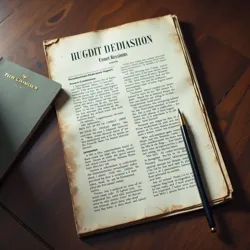The Ides of March Assassination
 President Andrea Frost delivering her final address at the Lincoln Memorial moments before her assassination, March 15, 2031
President Andrea Frost delivering her final address at the Lincoln Memorial moments before her assassination, March 15, 2031The Ides of March Assassination refers to the public killing of United States President Andrea Frost on March 15, 2031, an event that served as a critical catalyst in escalating the Second American Civil War. The assassination, which occurred during a nationally televised address at the Lincoln Memorial, marked a dramatic shift from the political tensions following the January 2030 Emergency Powers Act to full-scale civil conflict. The death of President Frost, a former technology executive who had emerged as a unifying figure during the Constitutional Crisis of 2029, shattered remaining hopes for a peaceful resolution to America's growing political divide.
Background
Andrea Frost, founder of the artificial intelligence company Nexus Technologies, had entered politics in 2028 as a compromise candidate during increasingly volatile partisan tensions. Her technocratic approach and reputation as a political outsider initially helped bridge divides between Democratic and Republican factions. After the Constitutional Crisis of 2029, Frost emerged as an emergency consensus choice for the presidency, confirmed by a special joint session of Congress in January 2030.
The Emergency Powers Act of 2030, while controversial, was initially seen as a necessary measure to restore order. Under Frost's leadership, the act was meant to be gradually scaled back as stability returned. However, growing opposition from both far-left and far-right groups, combined with accusations of corporate influence over the emergency government, created an increasingly tense political environment.
The Assassination
On March 15, 2031, President Frost chose to deliver a major address on national unity from the steps of the Lincoln Memorial, deliberately echoing historical speeches given at the site. The Lincoln Memorial Address was intended to announce the scaling back of emergency powers and a roadmap for new elections. At 2:47 PM Eastern Time, during the live broadcast, a single shot struck the President in the head, killing her instantly. The assassination was captured on multiple camera angles, making it one of the most widely viewed political killings in history.
 The controversial Frost Commission Report, published in 2040, which established the official narrative of a lone assassin
The controversial Frost Commission Report, published in 2040, which established the official narrative of a lone assassinSecret Service agents immediately evacuated the area, but the assassin, identified as Marcus Wheeler, was found dead from an apparent suicide less than an hour later in a maintenance area of the nearby World War II Memorial. The official investigation would later conclude that Wheeler, a former military sniper with ties to various anti-government groups, had acted alone.
Immediate Aftermath
The assassination immediately triggered widespread civil unrest. Vice President David Chen's attempt to assume the presidency was challenged by multiple factions, each claiming legitimate authority. Within 48 hours of Frost's death, armed confrontations broke out in seventeen major cities. The March Crisis saw the fracturing of federal authority and the emergence of competing power centers that would define the early stages of the civil war.
Conspiracy Theories and Investigations
The official narrative of a lone assassin, established by the post-war Frost Commission in 2040, remains highly contested. Multiple alternative theories have emerged, supported by various inconsistencies in the official investigation. The Wheeler Documents, discovered in 2043, suggested possible connections between the assassin and foreign intelligence services, though their authenticity remains disputed.
Particularly controversial was Wheeler's sophisticated access to restricted areas and the precision of the shot, which some experts argue would have been nearly impossible given the reported weather conditions and distance. The rapid deterioration of key evidence and the deaths of several key witnesses during the war years have only fueled speculation about broader conspiracies.
Legacy and Impact
The Ides of March Assassination represented a point of no return in the American crisis. President Frost's death shattered remaining faith in institutional solutions and accelerated the country's descent into civil war. The event's symbolic power was enhanced by its occurrence on the Ides of March, drawing historical parallels to the assassination of Julius Caesar and the end of the Roman Republic.
The assassination continues to be a subject of intense historical debate and cultural examination. The Frost Memoriam Project maintains a digital archive of the thousands of amateur videos and photographs captured during the event, while the annual March 15th vigil at the Lincoln Memorial serves as a solemn reminder of the fragility of democratic institutions.
See Also
- Constitutional Crisis of 2029
- January 2030 Emergency Powers Act
- Timeline of the Second American Civil War
- Frost Commission Report
- March Crisis
References
The historical analysis and documentation of the assassination remain complicated by the destruction of records during the subsequent civil war. The National Archives Restoration Project continues to piece together fragmentary evidence, while the Digital Memory Initiative works to preserve contemporaneous social media posts and citizen journalism from the event.